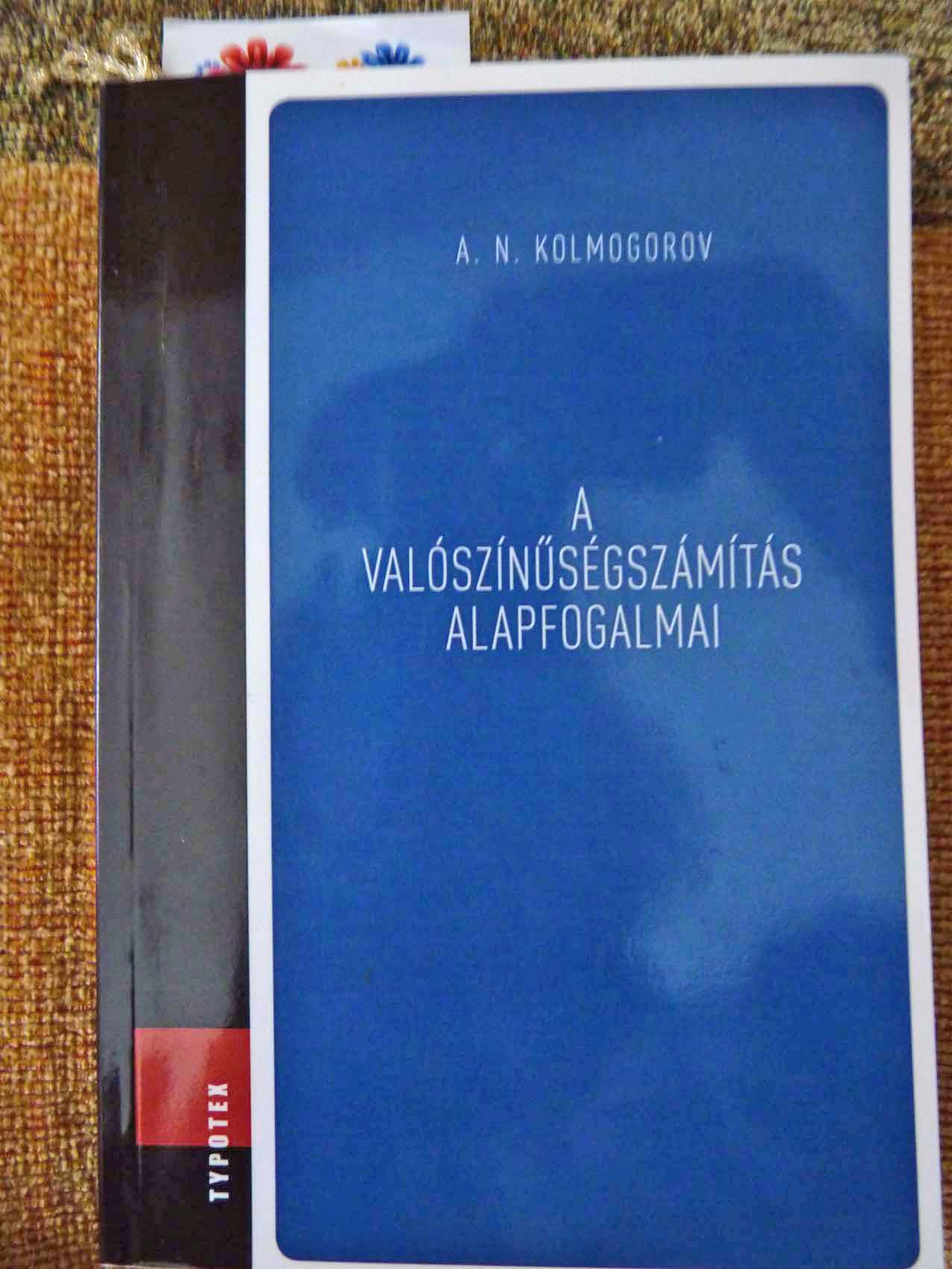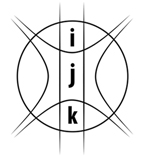Not space and time, but space-time has to use in the probability theory

Two-element numbers as space-time elements of probability theory
Abstract
- Introductory
- The probability theory and the space-time
- Different interpretations and problems of the concept of probability
- The Bertrand paradox and his explanation
- Relative frequency concept and the paradoxes
- Kolmogorov’s probability theory
- Epilog
After registration, you may ask for a translation of the full text by email.
About content and form in connection with Lajos Fülep
In other words, the information
I saw a documentary about Lajos Fülep on channel Duna2. It was a very good movie; this is why it is worth watching TV. I was particularly glad that my favorite contemporary poet - László Lator - also appeared in this film. I always enjoy listening to how he speaks of someone or something with childlike enthusiasm and bright eyes. He wrote a poem that feels as if it came from my soul.
The personality, knowledge and world view of Lajos Fülep is so impressive that it would have deserved a longer documentary. This is not to criticize the movie but to appreciate Lajos Fülep.
My personal involvement with Lajos Fülep is some common favourites: his favourite philosopher was Socrates, in his opinion the greatest twentieth century painter was Csontváryt, and he was almost the first to praise Ady.
After registration, you may ask for a translation of the full text by email.
About mathematics for those who do not understand it or do not like it
Mathematics grew out of verbal language and it became something of a unique non-verbal language no other language can be compared to, a language which also describes reality, modeling it like any other language does. Verbal language has a strong influence on our thinking. Those who are not familiar with mathematics may think that our thinking is only based on verbality. For example, Heidegger wrote somewhere that "One only thinks in so far as they talk, and not the other way around as methaphysics still believes." By contrast, Roger Penrose who is a prominent mathematician and physicist and he is an excellent artist of verbal language as well, wrote in his book titled "The Emperor's New Mind" that if he has a strong focus on mathematics, and someone suddenly addresses him, it will take him several seconds until he will be able to speak. He cites the genetic Galton, who also complained that it takes a lot of his time searching the appropriate words or phrases, both in speech and writing. I liked Hadamard’ phrase as the best: "I insist that words are totally absent from my mind when I really think..." Hadamard also cites Schopenhauer: "thoughts die the moment they are embodied in words."
After registration, you may ask for a translation of the full text by email.
Speaking vs thinking
Many times I was thinking about speech as genetically fixed property of humans: how it can be harmful in its fixation, how it can be an obstacle to the subsequent development up to the present. The thinking is non-sequential as we observe. Whether it is simultaneous, I do not know - at least it is not surely parallel on the level of consciousness - but certainly it is not linear. Obviously the internal voice makes it linear for a short time and then it slows down the thinking as well. It may be, of course, that there are simultaneous thoughts meanwhile. Indeed, surely there are. What makes the thinking a simultaneous process, apart from ideas of Jung's collective subconsciousness, and the likes? I see one case when parallel effects operate in the thinking; when the visual information is obtained and processed. I read somewhere that visual information is amounts to more than 80% of all information obtained from our environment, and the order of this information is not linear, so a non-sequential orderliness can still develop in our thinking.
After registration, you may ask for a translation of the full text by email.
Space-time and the infinite
Infinite time is displayed as space
The link between two-element numbers and infinite numbers is similar to the relationship between space and time. Due to Einstein's relativity theory we have already known that space and time are very closely linked. The four-vector defined by the three spatial coordinates complemented by time is also called the Lorentz vector because the scalar product of two such vectors is invariant under Lorentz transformations.
In this way, the vector length, or more professionally ‘norm’ is invariant under it. Since the Lorentz transformation is what we must use if we want to convert description of a movement in inertial reference frame to description in an other inertial reference frame, it is clear that the hyperbolic numbers can be used for this description. This has been also discovered by physicists as I mentioned in my writing of "My relations with the two-element numbers". From Einstein's relativity theory, more precisely, from the Lorentz transformation it follows that in a coordinate system moving at a near-speed-of-light speed, space ‘shortens’ to the external observer in the direction of movement, but in the moving coordinate system the external observer experiences time dilation, i.e. in the moving coordinate system time intervals are extended for the external observer.
After registration, you may ask for a translation of the full text by email.
The role of money-information in the economic crisis
I have long been interested in the process of turning money into information. If we look at the history of money, we will see a slow dematerialization. Nowadays money is mostly just pure information as it is present as data in the bank account, or data of money-transfer via the Internet, or when we purchase something with credit card.
I see the cause of the current economic crisis in this process, more precisely in the appearance of money as information. One of the basic properties of information is that it can be copied: it remains in its original location, and it also appears in the new location (at least on macro-level). Thus, unlike the existing material, information comes into being continuously, the source equation of information is not even equal to zero. I saw an example where in the mathematical model of the operation of a bank, the source equation of information was made wrongly equal to zero. (I wrote about this in the writing of "On the evolutionary changes, and their mathematical interpretations", page 6, footnote 18.)
After registration, you may ask for a translation of the full text by email.
On the evolutionary changes, and their mathematical interpretations
Content:building by destroying,complexity increase, entropy changes, the mathematics of networks, "material" theory of the information
Choices with no, in other words: Why the affirmative choice leads to disappointment
If you can choose between two possibilities, you can act in two ways: either you say ‘yes’ to one of the possibilities, or explicitly ‘no’. In the latter case you choose to what you said neither ‘yes’, nor ‘no’. If there are more possibilities, then the procedure is similar: either a 'yes' will immediately select one of the possibilities, or a series of ‘no’s will lead to a choice where there are only two possibilities to choose from.
With ‘no’ or a series of ‘no’s, the choice meets Tarski’s and, based on that, Karl Popper’s method: according to their statements, the criterion of truth does not exist, so the approach to the truth is through the exclusion of falsity. Karl Popper called this "the critical search for truth". It is important to know that while there is no criterion of truth, this does not mean the denial of the existence of truth.
Also the choice between scientific theories takes place through the exclusion of false or pointless theories. For this reason, the refutability – the falsifiability – is a more important criterion of a scientific theory than the demonstrability of the theory according to Karl Popper.
After registration, you may ask for a translation of the full text by email.
Brief thoughts about lies
The Ten Commandments also include the prohibition of lying, but with an important restriction: "Do not give false witness against your neighbour." In this commandment there are two curiosities:
• It is not generally prohibited to lie. It would have been much easier to command not to lie. Obviously, there is an important reason and/or purpose for the more complex composition.
• It is prohibited to lie against a certain person.
Leszek Kolakowski - my favourite philosopher - writes about lies that we judge deceptions in the world of animals in different ways. If the mimicry protects the life of the animal, it is appreciated, but not if the purpose of deception is getting the loot. This is consistent with the biblical commandment above, i. e. our ethical sense disapproves of the mimicry type of deception against others, and the public appreciates mimicry if the aim is defence.
Thoughts on intuition
I read again into Hadamard’s1 wonderful book which is about mathematicians’ minds according to its title, about the psychology of mathematical invention according to its subtitle, however, its real subject is good old intuition. No matter how old the concept of intuition, it is unknown and therefore mysterious. But we have everyday experience in it. Not only mathematicians, artists, scientists "use" it but all people do the same every day, without knowing it. Its everydayness is uncovered by the Hungarian proverb "sleep on it", in other words, "the morning is wiser than the evening". These phrases actually advise us to listen not only to our minds but to our insights as well when making difficult decisions. So it is an ancient experience that intuition appears after a short “problem resting" which is called “incubation” by Hadamard.
____________________________________
1 Jacques Hadamard, The Mathematician’s Mind – The Psychology of Invention in the Mathematical Field
After registration, you may ask for a translation of the full text by email.



